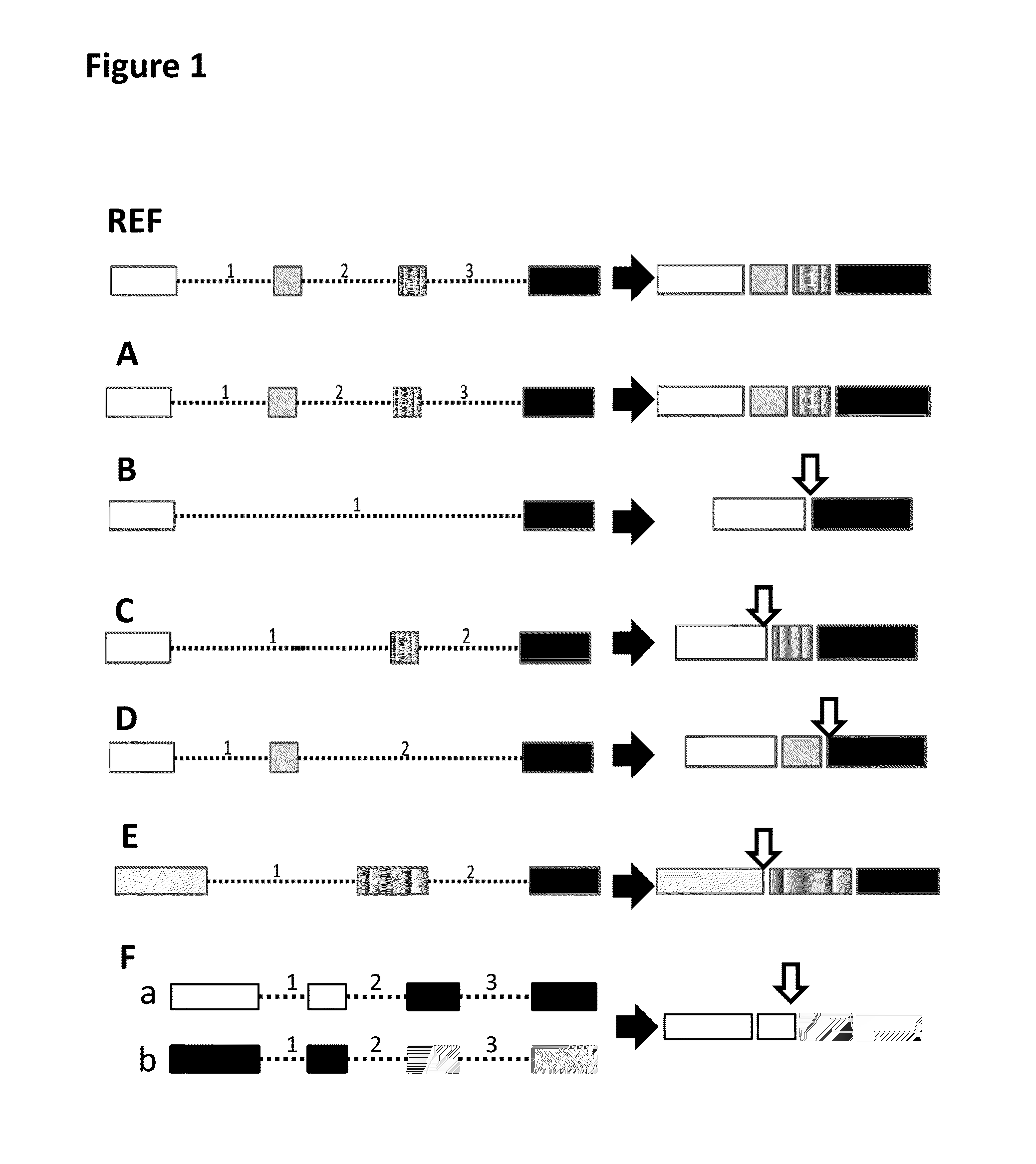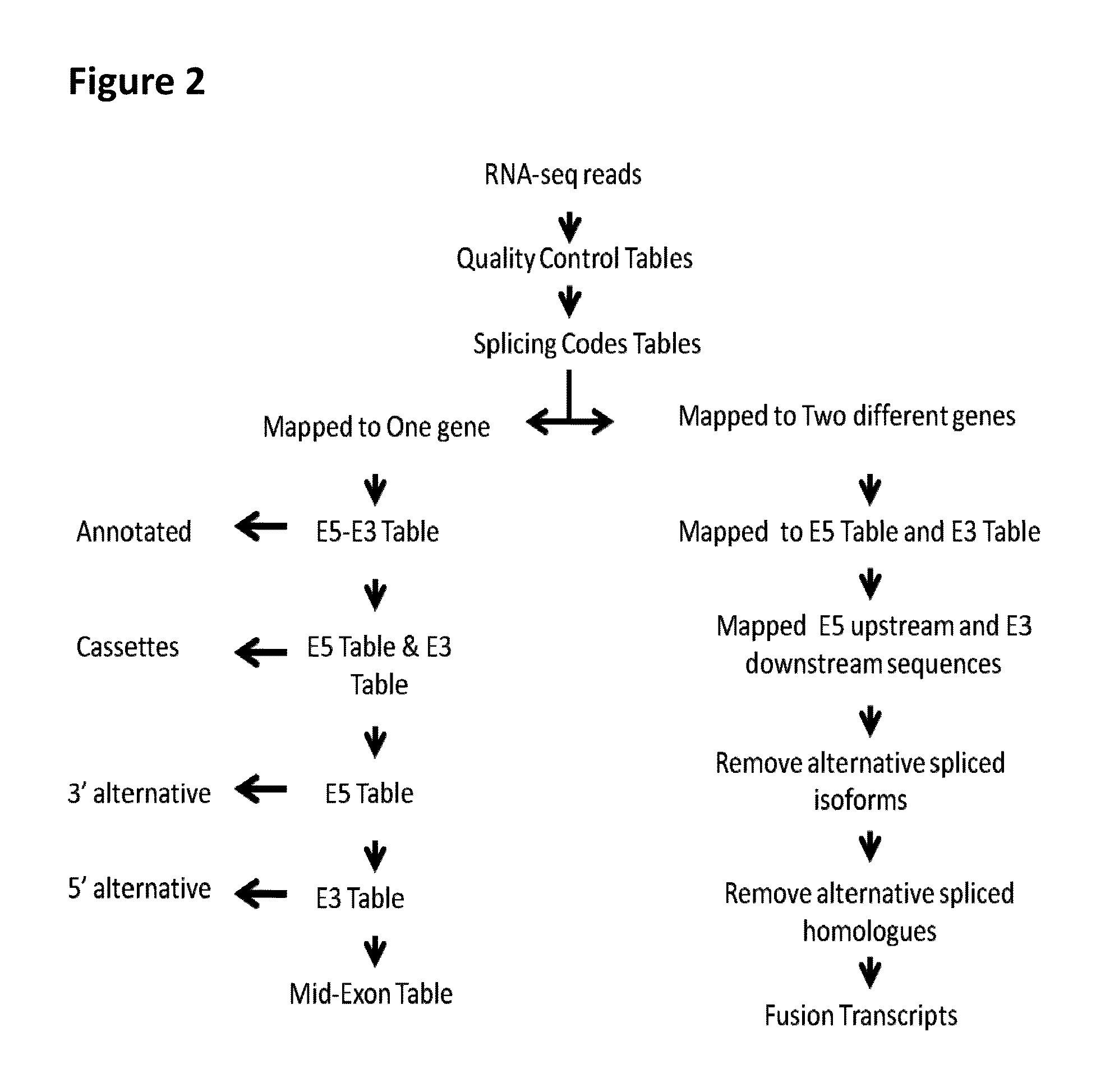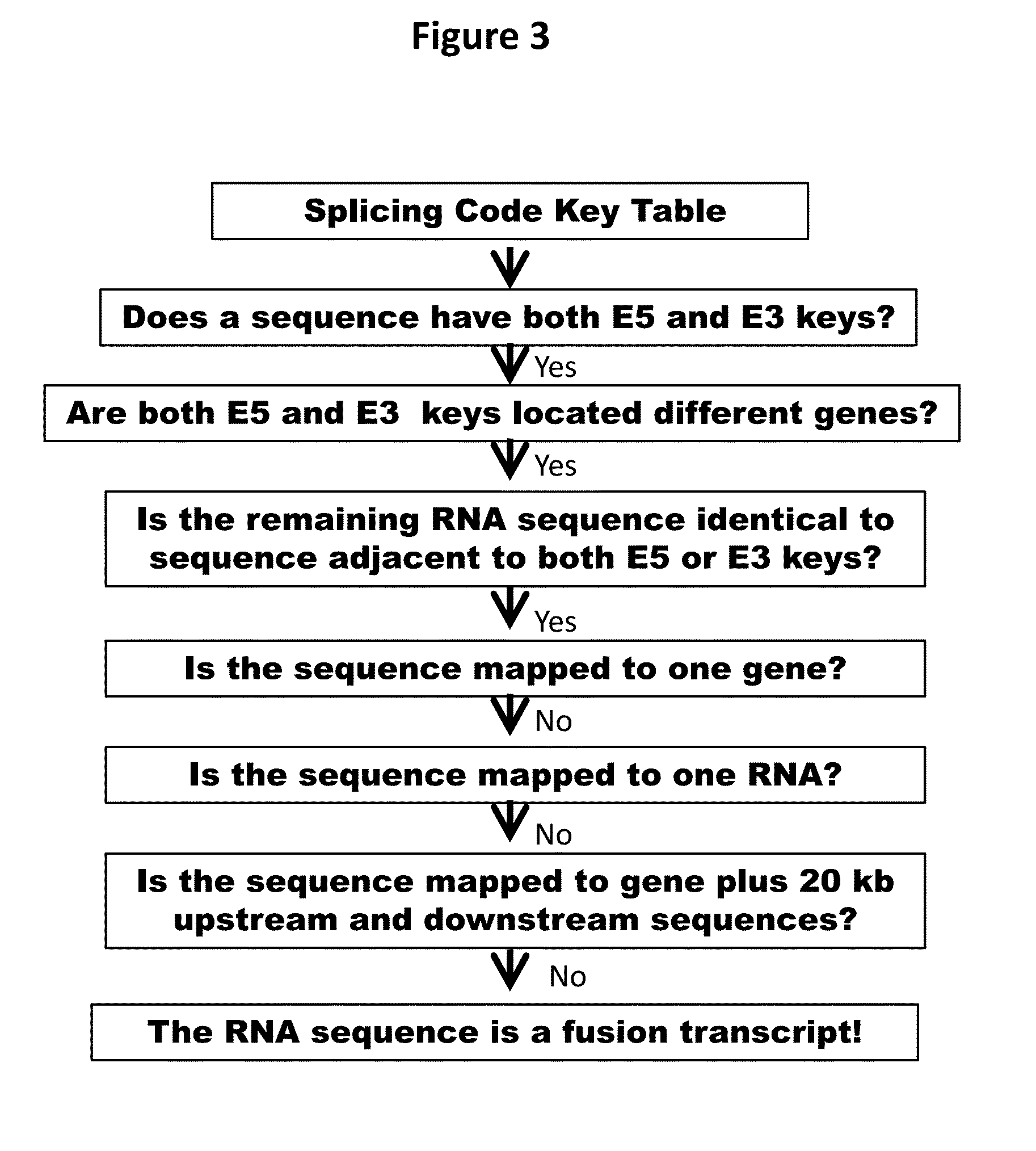Fusion transcript detection methods and fusion transcripts identified thereby
a detection method and transcript technology, applied in the field of fusion transcript detection methods and fusion transcripts identified thereby, can solve the problems of inefficient analysis of large rna-seq datasets, high mrna sequences that are difficult to analyze and computationally expensive, and are disproportionally accumulated
- Summary
- Abstract
- Description
- Claims
- Application Information
AI Technical Summary
Benefits of technology
Problems solved by technology
Method used
Image
Examples
Embodiment Construction
[0059]Previously, we have observed that recently-gained human spliceosomal introns have identical 5′ and 3′ splice sites (Zhuo, et al. 2007). Based on this finding, we have found that both 5′ exonic sequences (E5) immediately upstream of introns and 3′ intronic sequences (13) are dynamically conserved and appears rather reminiscent of self-splicing group II ribozymes and of constraints imposed by base pairing between intronic-binding sites (IBSs) and exonic-binding sites (EBSs) (Zhuo, et al. 2012). Therefore, we have proposed that both E5 and 13 sequences constitute splicing codes, which are deciphered by splicer proteins / RNAs via specific base-pairing (Zhuo, et al. 2012). Our splicing code model suggested that a yet-to-be characterized splicer proteins / RNA would decode identical sequences in all pre-mRNAs in conjugation with U snRNAs and spliceosomes, regardless whether the E5 and 13 sequences are in the one molecule or two different molecules.
[0060]In order to generate splicingcod...
PUM
| Property | Measurement | Unit |
|---|---|---|
| Composition | aaaaa | aaaaa |
| Length | aaaaa | aaaaa |
Abstract
Description
Claims
Application Information
 Login to View More
Login to View More - R&D
- Intellectual Property
- Life Sciences
- Materials
- Tech Scout
- Unparalleled Data Quality
- Higher Quality Content
- 60% Fewer Hallucinations
Browse by: Latest US Patents, China's latest patents, Technical Efficacy Thesaurus, Application Domain, Technology Topic, Popular Technical Reports.
© 2025 PatSnap. All rights reserved.Legal|Privacy policy|Modern Slavery Act Transparency Statement|Sitemap|About US| Contact US: help@patsnap.com



